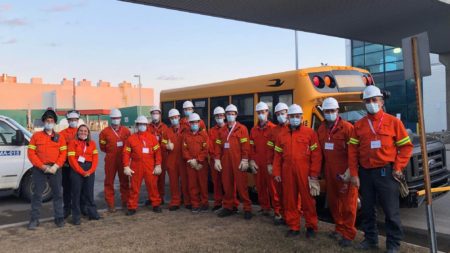27 July 1926: the Date of the First Ingot Cast at Arvida Works

Ninety-five years ago, on 27 July 1926, the first aluminium ingot was cast at Arvida Works, the very first aluminium smelter in Saguenay–Lac-Saint-Jean. This first ingot paved the way to nearly 100 years of expertise in aluminium manufacturing.
Our predecessors worked hard to propel our industry over these many years. Through their commitment, hard work and know-how, we have inherited an expertise that has been passed down from pioneer to pioneer and plants that have driven forward the global aluminium industry. Let’s take a few minutes to think about these men—fathers, husbands, aluminium workers—and women who have left us quite a legacy.
Ninety-five years of pride
For decades, the expertise and heart that people put into their work have been the hallmarks of our region. Indeed, at all our sites there are proud and dedicated people who have a real desire to see aluminium manufacturing continue in our beautiful region.
Of course, as in all industries, there will be headwinds. Only by continuing to work together will we be able to address the challenges ahead and make the transition to a more responsible aluminium, one that will meet society’s growing environmental expectations. Let’s be proud of our history and what we have accomplished so far—we are just getting started.

Arvida, is the birth of both an industry and a community
Arvida is the starting point. Today, we must also highlight the community that has shaped the industry and witnessed its broader growth. We are celebrating a rich history that has been written over the past 95 years and, above all, its key players. We have an important heritage here—a heritage that, moreover, was officially recognized by the Quebec government and Canadian government in 2018.
Arvida Heritage Centre
On 17 June 2021, the Arvida Heritage Centre, located in the former Sainte-Thérèse church, officially opened its doors. The centre’s mission is to identify, study, document and bring to life Arvida’s tangible and intangible heritage—as well as that of Kénogami and Jonquière—with a view to ensuring its enhancement, its influence, its preservation, its appropriation by the population, and its transmission to future generations, inspired by the principles of ecomuseology. Drop by for a visit!


